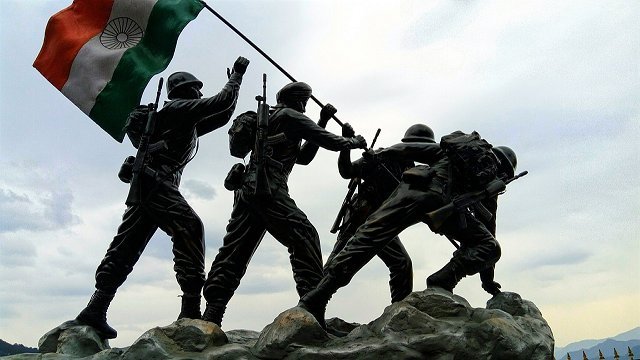Defense Minister Rajnath Singh honors fallen soldiers at the Kargil War Memorial
New Delhi
Paying tributes to the fallen infantrymen, Defense Minister Rajnath Singh said, “I salute those brave sons who sacrificed all their share to protect the motherland. I salute those brave first sons.” stood up for the country and did not hesitate any longer.” Let them sacrifice their lives for him.”
Respectful communication
During his visit, Rajnath Singh laid wreaths at the memorial and visited gravestones dedicated to the fallen units. In addition, he interacted with Army officers and soldiers and appreciated his will and dedication. The Defense Minister on the monument is a poignant reminder of the sacrifices made through the Indian Army in the face of adversity.
The 1999 Kargil War: A Glimpse into History
The Kargil War, fought within the rugged terrains of Ladakh, stands as one of the most substantial chapters in India’s current navy records. It became a end result of Pakistani Army and Islamabad-backed tribal armed forces crossing into Indian Territory through the Line of Control (LoC) all through the winter of 1998. The intruders occupied strategic positions, inclusive of the Batalik Sector and Kargil’s Drass, proceeding to seize manage of the important thing motorway connecting the Kashmir valley to Ladakh.
Facts approximately the 1999 Kargil War
1. The Kargil War – Why It Happened
The battle emerged as a result of Pakistan’s try to infiltrate Indian borders and capture manage of critical territories. Code-named "Operation Vijay," the Indian military launched a campaign to pressure out the invaders and recapture occupied Indian Territory in Kargil.
2. Live Television Coverage
The Kargil War become the first-ever struggle to be broadcast stay on Indian TV channels, supplying citizens with actual-time updates from the battleground.
3. Harsh Terrain and Challenging Conditions
Indian squaddies demonstrated huge courage and resilience, preventing in the harsh environs of the mountainous Ladakh location, scuffling with freezing temperatures and unforgiving terrain at high altitudes.
Four. Casualties
Around 500 Indian infantrymen and about 1,000 Pakistani troops misplaced their lives at some stage in the battle, highlighting the depth of the struggle.
5. Use of weapons
The Indian Army used heavy artillery, airpower and basic infantry tasks throughout the war. Notably, this is the first time the Bofors FH-77B howitzer has been deployed with the help of an Israeli unmanned aerial vehicle (UAV).
6. Indian Air Force (IAF) Role .
The IAF contributed significantly to the victory, bombing enemy positions and providing vital air support to ground troops.
7. Kargil War Strategy
The struggle turned into fought in three phases: identification of strategic positions captured through Pakistan and recapturing key regions, driving out intruders via floor battles, and retaining a firm military grip at the recaptured positions.
8.. Strategic Areas Recaptured
The Indian Army correctly recaptured strategic regions together with Tiger Hill, Point 4875, and Tololing, among others, at some stage in the navy marketing campaign.


